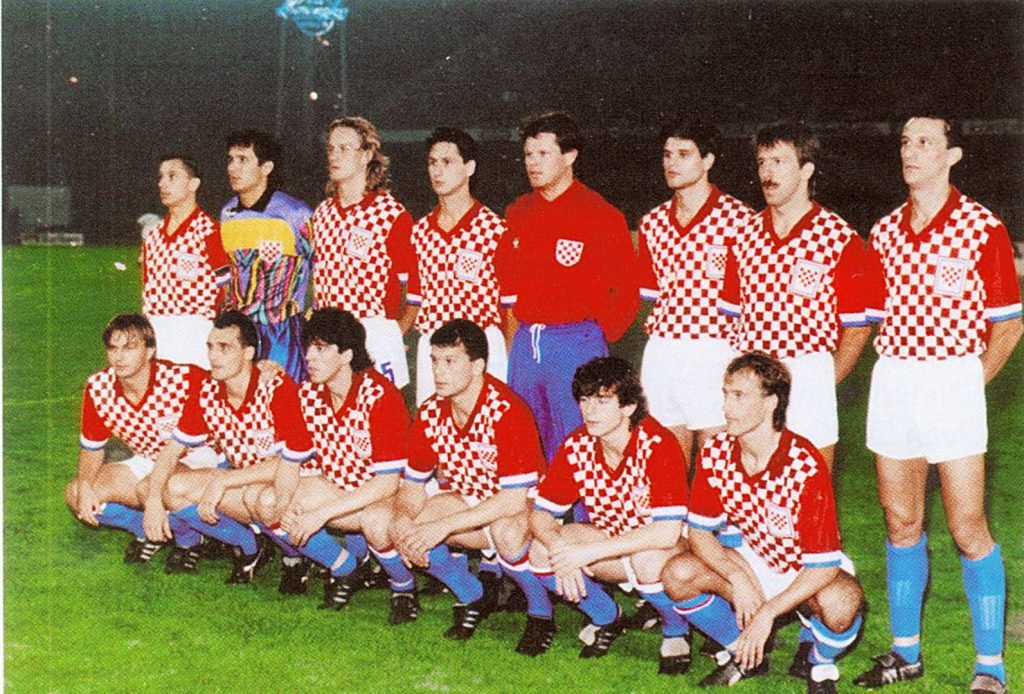October 17, 1990 was one of the most important dates in the history of Croatian football. On that day, the Croatian Men’s National Soccer Team played its first game in recent Croatian history as it defeated the United States by a score of 2-1.

The manager of the Croatian national team was Dražan Jerković who had the thankless task of gathering football players to participate in the match. In an attempt to prevent the match from taking place, the Yugoslav Soccer Association threatened to punish all players in the Yugoslav leagues should they play in the game against the Americans. To circumvent this, Jerković selected players who were playing in leagues outside of Croatia at the time. Despite expressing their desire to participate Zlatko Vujović, Tomislav Ivković, Srećko Bogdan, Haris Škora and Davor Jozić were not allowed to play by their clubs who felt that they were not obliged to make their players available since the game was not played during the time period allotted for international matches.

Vlado Kasalo appeared without his club’s permission and willingly paid the club’s fine of 25,000 German marks. Aljoša Asanović’s club Metz in France had an important game scheduled four days later but he managed to persuade the owner to provide a private jet so that he could play in the match. Asanović actually left the game in the 58th minute so that he could board the plane which had to be back in France by midnight. In the book Vatreni lakat (eng. “Fiery Elbow”), he recalled the moment when he received the invitation:
Having received an invitation for the Croatian national team, I also became a true Croatian volunteer. I couldn’t even imagine what would later happen to the Croatian state let alone the heights to which the Croatian soccer team, which in those days was re-established in such an incredibly enthusiastic way, would soar. When I remember it all, I am overwhelmed by warmth and joy. The autumn of 1990… that’s when it all began.

The match was played as part of the festivities surrounding the return of the statue of Ban Jelačić to Zagreb’s main square. The monument was removed from public view in 1947 by the communists who sought to eradicate any symbols of Croatian national consciousness. Prior to kickoff, pop singer Tomislav Ivčić sang the patriotic song “Ustani bane” (eng. Rise up, Viceroy) with the fans that created a radiant atmosphere in the stadium. Asanović scored the first goal in the 27th minute of play and the crowded stands of the Maksimir Stadium shook as the approximately 30,000 lucky people fortunate to get tickets for the match cheered for their national team. Ivan Cvjetković increased the lead to 2-0 four minutes later and both goals were set up by Marko Mlinarić. The US scored in the 80th minute of the game to make the final result 2-1.
The fourteen players who were the first to wear the iconic red and white checkered Croatian jersey were Dražen Ladić, Tonči Gabrić, Zoran Vulić, Darko Dražić, Drago Čelić, Vlado Kasalo, Saša Peršon, Grega Židan, Kujtim Shalla, Ivan Cvjetković, Aljoša Asanović, Mladen Mladenović, Marko Mlinarić and captain Zlatko Kranjčar.
Magistar sam povijesti. Radno iskustvo stjecao sam u Hrvatskom povijesnom muzeju i na Hrvatskoj radioteleviziji u emisiji TV Kalendar. Autor sam nekoliko knjiga i filmova na temu Domovinskog rata. Osnovao sam i uređujem Facebook stranicu Dogodilo se na današnji dan – Domovinski rat i portal Domovinskirat.hr. Također uređujem i vodim emisiju Domoljubne minute koja se svakog dana emitira na Hrvatskom katoličkom radiju te emisiju Sve za Hrvatsku i Novi valovi dobrote. Vlasnik sam obrta CroHis kojim promičem vrijednosti Domovinskog rata.

